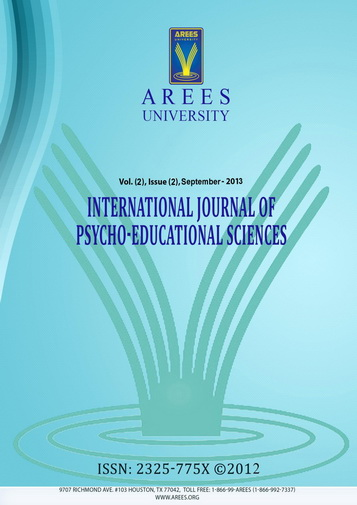The Characteristics of Superior Talented Students and Comparison of their General Ability and Wisc-R Tests’ Results
Keywords:
The characteristics of superior talented, intelligence point, WISC-RAbstract
Bümen stated that Gardner defined ‘intelligence’ an intercultural fact and problem solving ability (2005: 5). The fact that individuals solve their problems by using their intelligence makes them happy when they satify their expectations but if it doesn’t happen, it causes the unhappiness both for them and their society (Hökelekli and Gündüz, 2004: 142). In this study, in presentation process of individuals who are defined as having superior intelligence, the comparison has been made between the identificaitons of classroom teachers in line with the clause 9/2-c of Science and Art Centres Directive (BILSEM), general ability test and WISC-R test’s points. Correlation analysis was used in the comparision. It has been seen that Primary and secondary school students have the majority of characteristics in observation form. In correlation account in test points, the relationship between variances was specified and meaningful relationship was recognized between students’ intelligence points and verbal/performance points. However, no relationsip was found between general ability/knowledge tests’ points with verbal/performance points and WISC-R points.Downloads
References
Bümen, N. T. (2005). Okulda Çoklu Zeka Kuramı, Ankara, PegemA Yayıncılık.
Bloom, B. S. (1998). İnsan Nitelikleri ve Okulda Öğrenme,(Çev: Durmuş Ali Özçelik), İstanbul, Milli Eğitim Bakanlığı Yayınları No: 174, Öğretmen Kitapları Dizisi: 15.
Clark, B.(1997). Growing Up Gifted. Developing The Potential Of Children At Home And At School. (5th ed.). New Jersey: Merrilll, an imprint of Prentice Hall.
Davaslıgil, Ü. (2004). “Üstün Zekâlı Çocukların Eğitimi”, Üstün Yetenekli Çocuklar Seçilmiş Makaleler Kitabı, Çocuk Vakfı Yayınları, İstanbul.
Eser, Y.(2011). “Bilim ve Sanat Merkezleri’nin Eğitim Programlarının Hammond Modeliyle Değerlendirilmesi”, Fırat Üniversitesi Eğitim Bilimleri Enstitüsü Eğitim Programları ve Öğretim Anabilim Dalı, Yayınlanmamış Doktora Tezi.
Hökelekli, H., Gündüz, T. (2004), “Üstün Yetenekli Çocukların Karakter Özellikleri ve Değerler Eğitimi”, I. Türkiye Üstün Yetenekli Çocuklar Kongresi Bildiriler Kitabı. İstanbul: Çocuk Vakfı Yayınları: 64, I Türkiye Üstün Yetenekli Çocuklar Kongresi Yayın Dizisi: 2.
MEGEP (Mesleki Eğitim ve Öğretim Sisteminin Güçlendirilmesi Projesi), (2007). Çocuk Gelişimi ve Eğitimi, Üstün Zeka ve Özel Yetenekli Çocuklar, Ankara.
Miller, R.C. (1990). Discovering Mathematical Talent, (ERIC Digest No.E482) ERIC Clearinghouse on Handicapped and Gifted Children Reston VA.
Robinson, A. ve Clinkenbeard, P. R. (1998). Giftedness: An Exeptionality Examines, Annual Review of Psychology, [On-lineserial].
Tan, Ş.(2011). Öğretimde Ölçme ve Değerlendirme KPSS El Kitabı, Pegem Akademi Yayınları, 6. Baskı, Ankara.
Yanpar, T. (2007). Öğretim Teknolojileri ve Materyal Tasarımı, Ankara, Anı Yayıncılık, 8. Baskı.
Additional Files
Published
How to Cite
Issue
Section
License

This work is licensed under a Creative Commons Attribution-NonCommercial-NoDerivatives 4.0 International License.










